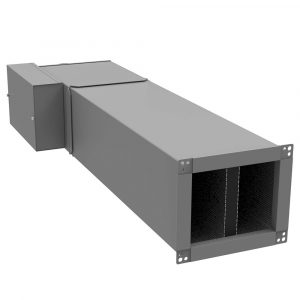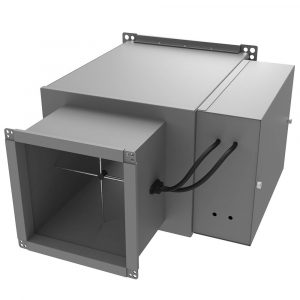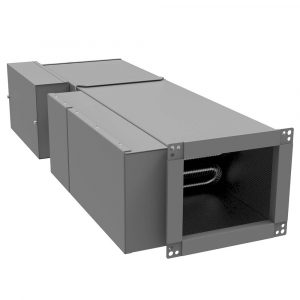Description
DESCRIPTION
Shapeair TU VAV terminal units are a volume flow rate controller for supply air on variable air volume system. These units are designed to control the air flow of conditioned air into an occupied space in response to a control signal from a thermostat or Building Automation System (BAS). They can be used in standalone systems or interfaced.
Shapeair VAV terminal units consist of a casing with circular spigot or square inlet, rectangular outlet connection with integral of fibreglass with black matt tissue for noise reduction, damper blade for air volume control and cross flow differential pressure sensor for measuring air volume.
Shapeair VAV terminal units can also incorporate control components, such as controller actuator and transformer, which can be factory fitted. Shapeair can factory fit and calibrate free issue controls using in-house testing facilities.
Controllers allow the terminal units to regulate the flow rate as dictated by the thermostat or BAS and compensate instantly for any changes in supply air pressure that may alter the supply air volume. Hence, the net result is a pressure independent variable air volume system.
CONSTRUCTION
Casing: 0.9mm thickness galvanised steel
Damper blade: Double layer heavy gauge galvanised steel with peripheral EPDM gasket
Internal insulation: 25mm thick, 48kg/m³ density insulation
Bearing: Engineered polymer
Shaft: Electroplated shaft with blade positioning locator
Differential pressure sensor: Drawn aluminium tube
OTHER MODELS
Variable Air Volume – Pressure Dependent Control
- Without differential pressure sensor
- Pressure dependent
- No monitoring of air volume
Variable Air Volume (VAV) Pressure Independent Control
- With differential pressure sensor
- Pressure independent
- Air volume varies depending on design flow and signal by controller
- Air volume can be monitored
Constant Air Volume (CAV) Pressure Independent Control
- With differential pressure sensor.
- Pressure independent
- Air volume is constant (design flow), provided the minimum static pressure is achieved
- Air volume can be monitored




